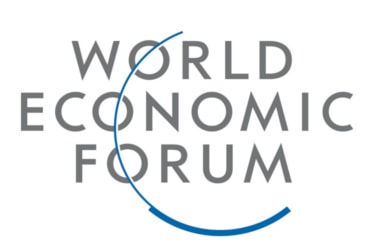WEF releases Global Gender Gap Report 2016
Q. WEF/World Economic Forum on 25th Oct 2016 released which report on gender gap?- Published on 28 Oct 16a. International Gender Gap Report 2016
b. Global Gender Gap Report 2016
c. World Gender Gap Report 2016
d. None of the above
ANSWER: Global Gender Gap Report 2016

World Economic Forum on 25th October 2016 released the Global Gender Gap Report 2016 which provides scores for144 nations compared to 145 countries included in the 2015 report.
- More than a decade of data has revealed that progress is too little for realising the complete potential of humanity within the lifetimes.
- Iceland topped the Gender Gap Index in the 8th consecutive year in a row.
- India stood at 87th position from the 108th position in 2015.
- As per the report, the global gender gap across health, education, economic opportunity and politics will take 83 years across 107 nations covered since the report was first released to close the gap completely.
Top 10 countries with high gender equality are as follows:
1. Iceland
2. Finland
3. Norway
4. Sweden
5. Rwanda
6. Ireland
7. The Philippines
8. Slovenia
9. New Zealand
10. Nicaragua
- Five countries with the least gender equality are Yemen, Pakistan, Syria. Saudi Arabia and Chad.
- Non European nations in the top 10 included Rwanda, The Philippines, New Zealand and Nicaragua.
- Of the 142 countries covered by the Index both this and last year, 68 nations have increased their overall gender gap score compared to 2015 while 74 have seen it decrease.
- No country in the world has closed the gender gap, but 4 out of 5 Nordic countries and Rwanda have closed more than 80 percent of theirs Yemen, the lowest ranking country has closed slightly less than 52 percent of its gender gap
- The Global Gender Gap Index reveals that all countries can do more to close the gender gap.
- Across the index, there are 5 countries that have closed 80 percent of the gap or more.
- Additionally, 64 countries have closed between 60 to 70 percent while 10 countries have closed between 50 to 60 percent.
- India has ranked at 87th position and succeeded in closing the gender gap with regard to wage equality and all indicators of Educational Attainment sub-index completely closing primary and secondary education enrolment gender gaps.
- It sees some regression on women estimated earned income and continues to rank third lowest in the world on health and survival.
- It is the world’s least improved country on this sub index over the past 10 years.
- Economic participation and opportunity was a field where India ranked in 136th position with 0.408 score.
- In the segment, India’s performance was one of the lowest among surveyed countries.
- In 2015, India was placed at 139th position while India was ranked at 113rd position with 0.408 score.
- In this segment, India’s performance was one of the lowest among the surveyed countries.
- In 2015, India was placed at 139th position.
- With an average remaining gender gap of 33 percent, the South Asia region is the second lowest scoring on this year’s Global Gender Gap Index ahead to the MENA and behind the Sub-Saharan Africa region.
- Bangladesh and India are top ranked nations in the region, having closed just over 70 percent and 68 percent of their overall gender gap, while the lowest ranked countries are Bhutan and Pakistan, having closed 64 percent and 56 percent of their overall gender gap respectively.
- No country in the region has fully closed its Educational Attainment gender gap and only one country Sri Lanka has completely closed its Health and Survival Gap.
- The region is home to one of top 5 climbers over the past decade on the overall Index and on Educational Attainment: Nepal.
- The ranks of BRICS countries in ascending order are South Africa, Russia, Brazil, China and India.
- Three basic concepts underlying the Global Gender Gap report include focuses on measuring gaps rather than levels, capturing gaps in outcome variables rather than input variables and ranking countries according to gender equality rather than women’s empowerment.